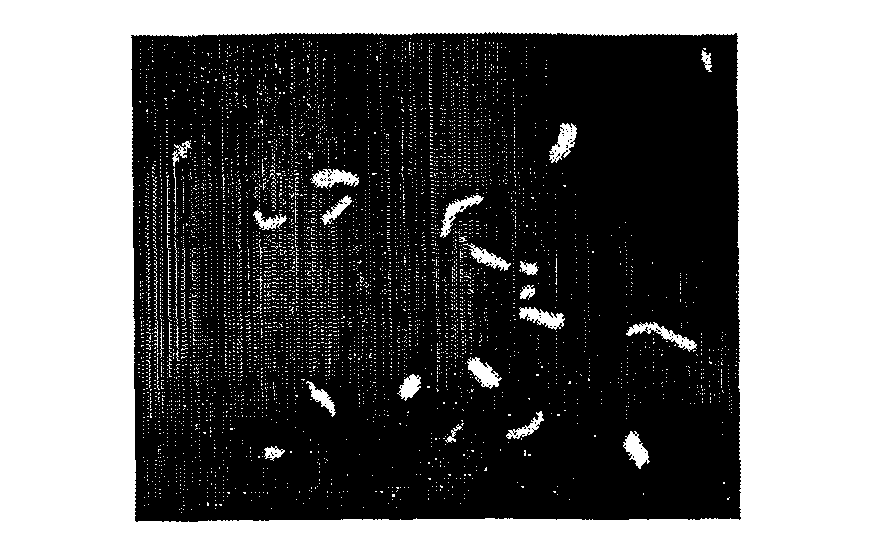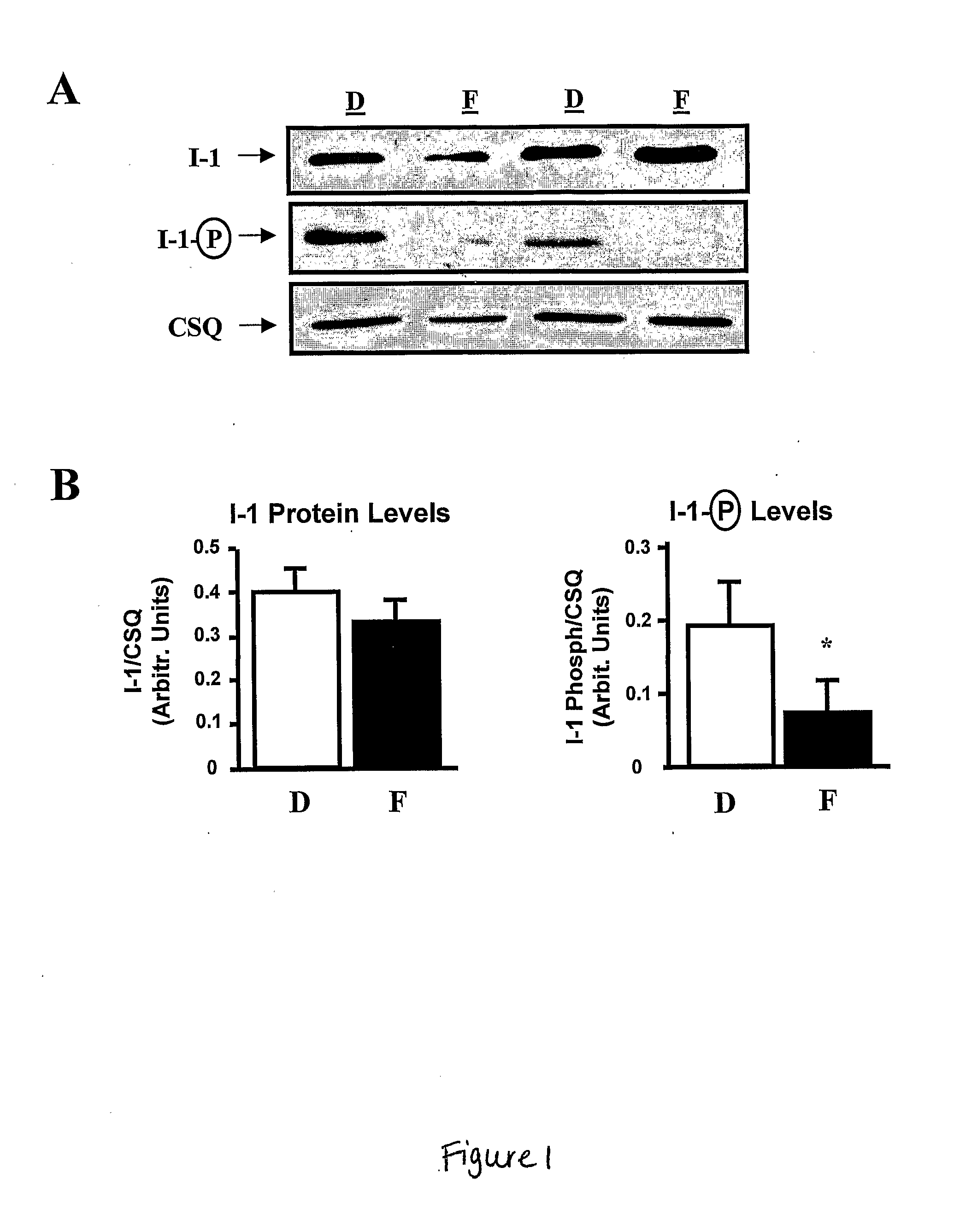Modulating Phosphatase Activity In Cardiac Cells
a phosphatase activity and cardiac cell technology, applied in the direction of phosphorous compound active ingredients, drug compositions, metabolic disorders, etc., can solve the problems of unknown role of phosphatase inhibition in -adrenergic responsiveness and less well-developed reversal of increased cardiac contractility, so as to improve -adrenergic responsiveness and decrease phosphatase activity
- Summary
- Abstract
- Description
- Claims
- Application Information
AI Technical Summary
Benefits of technology
Problems solved by technology
Method used
Image
Examples
example 1
I-1 And Its Phosphorylation In Failing Human Hearts
[0119]To examine the levels and the phosphorylation state of I-1 in failing human hearts, the levels of I-1 were compared in biopsies from nine non-failing and ten failing human hearts, in which the primary diagnosis was dilated cardiomyopathy (IDC). To control for equal loading of protein, the data were normalized to calsequestrin protein levels, as the levels of this SR protein were similar between failing and non-failing samples (FIG. 1A). Total I-1 protein levels were not different between donor and failing hearts but its degree of phosphorylation was significantly reduced (˜60%) in failing hearts (FIG. 1B), indicating that I-1 was predominantly inactive and thus, incapable of inhibiting PP1 activity in the failing human heart. The decreased I-1 phosphorylation may reflect impaired β-adrenergic signaling and decreased PKA activation due to reduced cAMP levels in failing (5.8±0.7 pmol / mg, n=9) compared to donor (10.9±1.3 pmol / mg,...
example 2
Inhibition of PP1 By A Constitutively Active I-1 Enhances Contractile Responses to β-Agonists In Failing Human Cardiomyocytes
[0120]
[0121]I-1 deficient mouse hearts show decreased contractile parameters. Further, in some cases of human heart failure, PP1 activity is increased. This increase may, at least partly, be due to inactivation or dephosphorylation of I-1, leading to depressed function. Thus, increasing I-1's activity can be beneficial in restoring the attenuated β-adrenergic responsiveness in failing human cardiomyocytes.
[0122]Adenoviral-mediated expression of a constitutively active I-1 protein (I-1T35D) was used in myocytes isolated from human failing hearts (del Monte F, et al.,Circulation. 1999; 100:2308-11). The design of the I-1T35D construct entailed truncation of the I-1 cDNA to encode for the first 65 amino acids and introduction of nucleotide changes to replace the PKA phosphorylation site (GGT: Thr35) with aspartic acid (GTC: D), resulting in a constitutively activ...
example 3
Percutaneous Antegrade Intracoronary Gene Transfer With Concomitant Coronary Vein Blockade (CVB) Can Be Used To Deliver Genes To Heart Tissue
[0125]Different serotypes of AAV were tested for their ability to deliver an exogenous gene to the heart. AAV6 has found to have some surprising and unexpected properties relative to other AAVs. AAV6 conferred the fastest gene expression, as well as the most specific and efficient expression in the heart (data not shown). Other AAVs, however, may be useful for other applications, e.g. ones in which a different course of expression is desired in heart tissue.
[0126]Percutaneous antegrade intracoronary gene transfer with concomitant coronary vein blockade (CVB) was performed in both sheep and swine models. The left anterior descending artery (LAD) or the left circumflex artery (LCX) was cannulated and occluded with a standard angioplasty balloon. One-minute ischemic preconditioning in both the LAD and the LCX distribution (by blockade of the LAD a...
PUM
| Property | Measurement | Unit |
|---|---|---|
| Length | aaaaa | aaaaa |
| Time | aaaaa | aaaaa |
| Flow rate | aaaaa | aaaaa |
Abstract
Description
Claims
Application Information
 Login to View More
Login to View More - R&D
- Intellectual Property
- Life Sciences
- Materials
- Tech Scout
- Unparalleled Data Quality
- Higher Quality Content
- 60% Fewer Hallucinations
Browse by: Latest US Patents, China's latest patents, Technical Efficacy Thesaurus, Application Domain, Technology Topic, Popular Technical Reports.
© 2025 PatSnap. All rights reserved.Legal|Privacy policy|Modern Slavery Act Transparency Statement|Sitemap|About US| Contact US: help@patsnap.com



